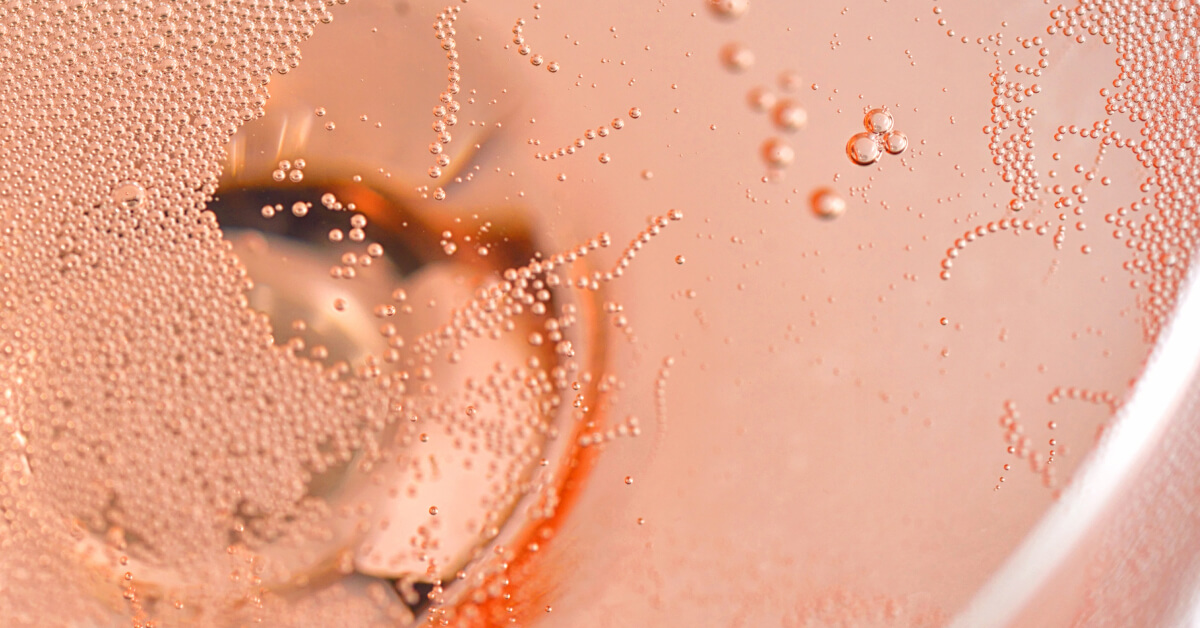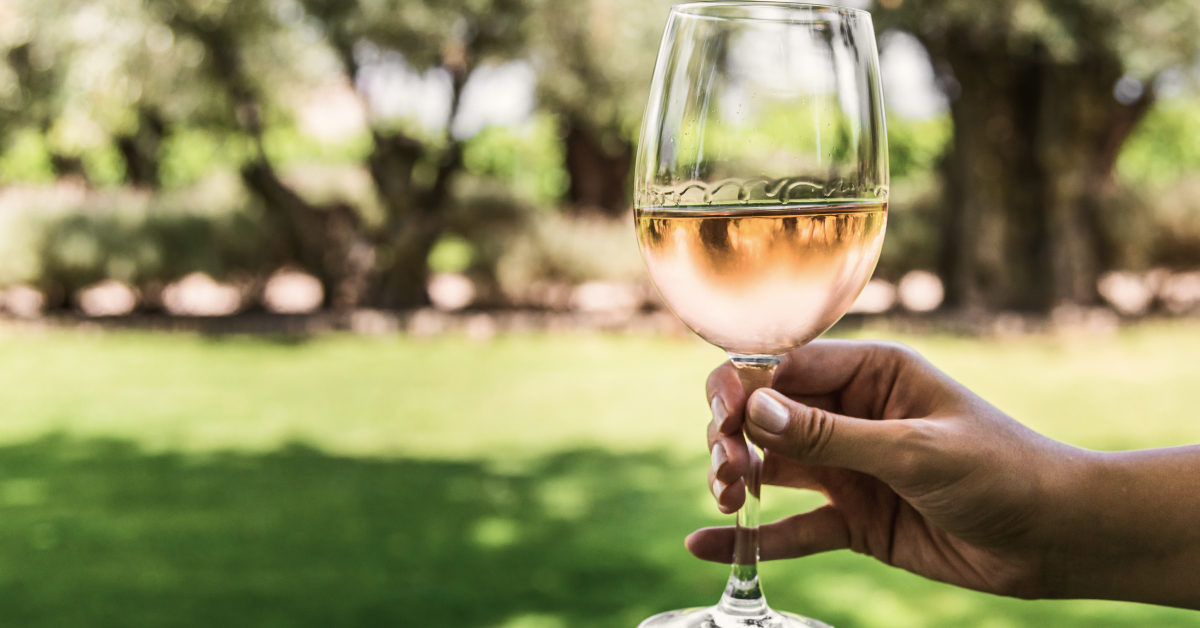The mofo guide to | Rosé
Where do you start with the wine that's made the world over, from practically every black grape, and that we can't get enough of? Here's our 1-0-1 on all things rosé.
What’s great about rosé
Where do we start with rosé? Its popularity has gone from strength-to-strength over the last decade, and rightly so. It’s accessible, easy-drinking, and a perfectly chatty wine to accompany good times, whenever and wherever they’re taking place. Versatile as a food pairing option, it’s also great straight up by itself - and delivers that knockout one-two of taste and value in spades.
Check out: Rosé Lineup 36.0

What styles of rosé are there?
We’ll dive into the major regions and varietals in a sec, but typically you’ll find rosé in three forms - dry, off-dry, or sparkling. Traditionally “old world” regions (think France, Spain, Italy) were famed for dry styles of rosé, with the “new world” regions renowned for off-dry styles - see California’s white zinfandel. Whilst that can still be useful as a general guide, truth is that you’ll find rosé of all styles the world over. And don’t overlook sparkling rosé either - Champagne in particular is noted for producing pink bubbles from pinot noir, and you’ll find premium traditional method sparkling rosé being made worldwide.
Check out: Rosé 2022 – Black Market Deal #44180
What to expect with a rosé
Anything but one-dimensional, there’s a few key countries and regions to know about when it comes to rosé - and the particular styles that they’re famed for.
Provence, France
Provence is often considered the big kahuna when it comes to rosé. Down in the sun-kissed south of France, Provencal rosés are made to be pale and delicate in style, perfect for those sultry Cannes evenings. Made primarily from Grenache, Cinsault, and Syrah grapes, they offer a crisp, bone-dry experience with flavours of strawberry, watermelon, and a hint of provence herbs. “Elegant” and “refined” are the key buzzwords thrown around when discussing Provence-style rosé (so make sure to stick your pinky finger out when sipping), and they’re a perfect companion for a seafood feast or a platter of artisanal soft cheeses.
Tavel, France
Nestled in the southern reaches of the Rhône Valley lies Tavel, a region that prides itself on producing some of the world's finest rosés. Tavel rosés are bold and vibrant, with a deep pink hue that hints at the robustness within. Grenache, cinsault, and clairette grapes lend their strength to these wines, offering flavours of ripe red berries, wild herbs, and a touch of spice. Tavel rosés are dynamite with heartier fare like grilled meats, mediterranean dishes, and hearty stews.
Rioja, Spain
In the Rioja region (famed for those robust reds) rosés are most commonly made from tempranillo. These rosés frequently possess a luscious salmon-pink colour and are vibrantly fruited - think a bowl of fresh strawberries and cherries. They strike a balance between acidity and fruitiness, making them versatile companions for their classic dancing partners of tapas, grilled vegetables, and paella.
California, USA
Across the Atlantic, California has embraced the rosé revolution with open arms. From Napa Valley to Santa Barbara, American rosés have found their unique voice. Zinfandel, grenache, and syrah dominate blends here, resulting in a bold, fruit-forward profile that are frequently made to be off-dry in style (especially those labelled “white zinfandel”). Think ripe raspberries, juicy peaches, and a hint of tropical fruit with these mofos, and a vibrant personality that pairs well with backyard barbecues, spicy thai, indonesian or vietnamese cuisine.
South Africa
South African rosés exhibit an incredible diversity, showcasing a range of grape varietals such as the regionally-famed pinotage, cinsault, and shiraz. You’ll find a spectrum of flavours on offer here, from tangy red fruits to vibrant citrus, often with a clean mineral driven finish too. Versatile as you'd like, they're perfect companions for grilled seafood, rich curries, and don’t look past the regional pairing of braaied boerewors either (barbecued snags is an Aussie approximation).
Australia
And of course here rosé has emerged as a bright and racy star, capturing our hearts and filling our glasses. Australian rosés embrace a multitude of grape varieties - shiraz, grenache, sangiovese, tempranillo, pinot noir, mataro and even cabernet sauvignon grace the stage, offering a range of styles and flavour profiles - so forgive us for speaking very generally when it comes to what to expect. Typically you'll be treated to ripe red berries and cherries, with some warmer region examples also showcasing tropical fruits like watermelon. Some Australian rosés may even display a touch of Provence-style herbaceousness, perfect for pairing with barbecued prawns, sashimi, spicy Asian-style dishes, or simply enjoyed on their own, lightly chilled to perfection.
Check out: Taltarni Vineyards Taché Sparkling Rosé 2016

Which grapes are used for rosé?
Pretty much any black grape you can think of has been used to make rosé at one time or another, and varietals are often blended together, depending on what the winemaker is looking to do. Here’s the key varietals that you’ll see time and again though, and a general guide to the style of rosé they make.
Check out: Rosé 2023 – Black Market Deal #48285
Grenache
With origins in the sun-soaked vineyards of Southern France, grenache based rosé is usually super vibrant and fruit-forward. Expect to find juicy strawberries, raspberries, and even a light touch of spice, depending on how long it’s been left on skins.
Check out: Rosé 2022 – Black Market Deal #46846
Syrah/shiraz
We know it for making the reds we can’t get enough of, but don't underestimate shiraz’s ability to shine in rosé form. Expect a bolder, more intense rosé - and raspberries and cherries galore.
Cinsault
Prepare yourself for the French Riviera in a glass. Cinsault, an unsung hero of the rosé realm, brings elegance and finesse to the party. With delicate floral aromas and a light, crisp demeanour, this rosé is the equivalent of a sophisticated stroll along the promenade. Imagine biting into a juicy watermelon on a hot summer day. That's cinsault rosé.
Mourvèdre/mataro
If you crave a rosé with a touch of mystique, mourvèdre is your ticket. Hailing from the sun-kissed vineyards of Provence and beyond (and known as mataro, down under), these are more contemplative rosés, if you can imagine such a thing. Think notes of ripe red fruit intermingling with a touch of bramble and hedgerow.
Check out: Rosé 2022 – Black Market Deal #45933
Sangiovese
Sangiovese, the beloved grape of Tuscany, takes a departure from its red wine fame to create a lively and refreshing pink drop. Take a sip, and picture yourself riding a Vespa through the rolling hills of Chianti in the height of summer. Expect flavours of tart cherries, red currants, and a hint of that Tuscan sunshine. Bellissimo!
Pinot noir
As a true globetrotter, pinot noir couldn't resist dipping its toes into the rosé pool. With its light and delicate nature, pinot noir creates a ballet of flavours on your palate - think of wild strawberries, raspberries, all tied together by a refreshing acidity. Yum.
Check out: te Pā Rosé 2023
Cabernet franc
Prepare yourself for a rosé with a bit of attitude, courtesy of cabernet franc. Originally hailing from the Loire Valley, expect vibrant red fruit flavours, herbal notes, and a distinct, edgy profile that keeps you coming back for more.
Zinfandel
Zinfandel, originating from California, brings its flamboyant personality to the pink party. Zinfandel rosé has a rep for being uncomplicated and unpretentious with ripe red fruit flavours - but with the best examples you might even be treated to a hint of spice, leaving you with an exhilarating finish that lingers long after the last sip.
What temperature should I serve rosé at?
Generally the guide is to lightly chill rosé - with slightly less acid than your typical white, too much cold makes them introverted. Give them an hour in the fridge. If the wine feels too cold on first taste, cup your hands to warm the glass – you'll soon find that the wine is perfect drinking temp. But, as always for every rule there’s an exception, and your enjoyment counts. Check the recommended serving temperature on the bottle, if you’re unsure.

What foods pair with rosé?
Rosé is a fantastically versatile food pairing option, given that it’s sitting in that middle ground that’s somewhere between a white and a red. Paler rosés are great with fresh and grilled seafood, and rosés with a bit more blush can be a winner with grilled meats like roast chicken, lamb or pork too. Don’t overlook the “if it grows together, it goes together” advice either when it comes to regional pairings - ratatouille is a great pairing with a Provence-style rosé for example, complementing and contrasting with the dish in all the best ways. Off-dry rosé is also perfect to reach for when it’s getting a bit spicy in the kitchen too, as that residual sugar will tame a bit of chilli heat. Don’t be scared to pair it with a curry - and our personal fave is an off-dry grenache based rosé with a hot prawn vindaloo.
Check out: Sparkling Rosé 2022 – Black Market Deal #46956

When should I be drinking rosé?
What’s that call-to-arms that we’re seeing everywhere? “Rosé, everyday”? Whilst it’s definitely not your doctor’s (or our) recommended drinking advice, “rosé anyday” is a great shout - given how versatile rosé is, it can be there with bells on for any occasion you’re planning. Picnics at the park, weekends out on the deck with the grill, or cool and crisp evenings with a charcuterie and cheeseboard - rosés got your back.
Check out: Nicolas Maillart Brut Rosé Grand Cru NV
Ready for rosé? Check out our latest stock here.
